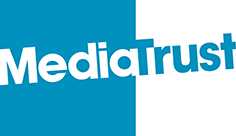Media Trust commissioned the production of this resource by the Ethical Journalism Network and Bipolar UK to help news organisations embrace best practice in their coverage of race and mental health.
Stories that limit people to their skin colour or mental health diagnosis reinforce stereotypes and create stigma –public perceptions of race, mental health (and other equalities issues) can be framed by media coverage. This guide explains how the best examples of reporting on race and mental health share three qualities -they are empathetic, fact-based and experience-led. Media coverage can also simultaneously amplify the distress of racism, whilst making people of colour question their own experiences of racism (also known as “gaslighting”). This guide examines how news reporting can contribute to racial gaslighting -and the steps media outlets can take to limit it.
This resource is part of Media Trust’s Headlining Mental Health programme, funded by Gamesys Foundation. The programme aims to improve the strategic communications of small mental health organisations across the UK, including media coverage.




